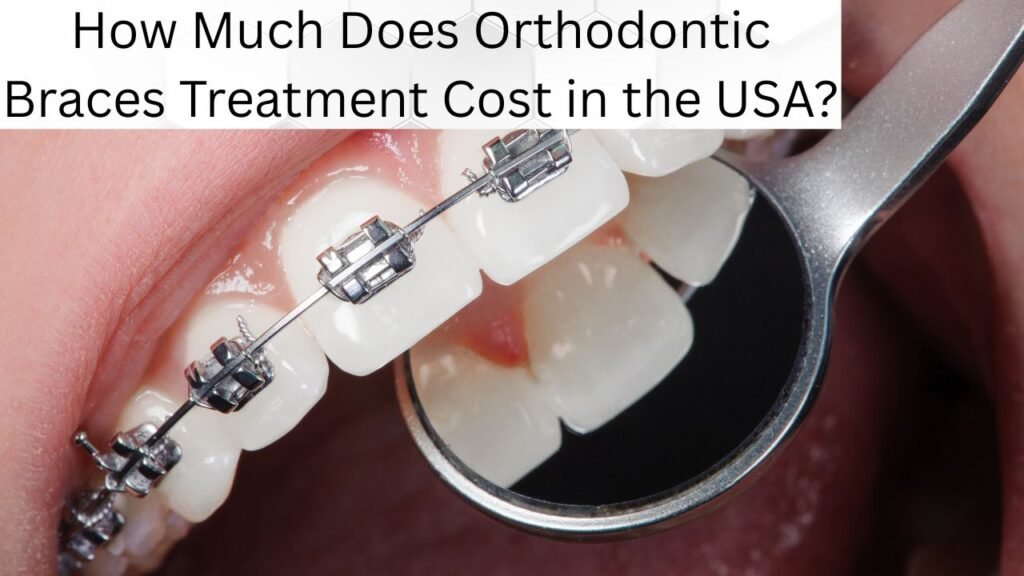The Real Cost of a Perfect Smile: What to Expect
You’re dreaming of a straighter smile, but the big question looms: How much does orthodontic braces treatment cost in the USA? On average, the cost ranges between $3,000 and $7,000, but this can vary based on several factors. Let’s delve into the details to help you understand what influences these costs and how to plan accordingly.

Quick Cost Comparison by Braces Type
Here’s a concise table summarizing the typical cost ranges for different types of braces:
| Type of Braces | Typical Cost Range | Key Features |
|---|---|---|
| Metal Braces | $3,000 – $7,000 | Most affordable; highly effective for complex cases |
| Ceramic Braces | $4,000 – $8,500 | Less visible; prone to staining |
| Lingual Braces | $8,000 – $13,000 | Hidden behind teeth; custom-made |
| Clear Aligners | $3,000 – $8,500 | Removable and discreet; suitable for mild to moderate cases |
Note: Severe misalignments or bite issues can increase costs by 20–30%.
Factors Influencing Braces Cost
1. Complexity of the Case
The severity of your dental issues significantly impacts the cost. For instance, correcting a severe overbite or crossbite may require additional appliances or extended treatment time, increasing the overall expense.
2. Duration of Treatment
Longer treatment durations mean more appointments and adjustments, which can add to the cost. For example, a treatment plan extending beyond 24 months might incur additional fees.
3. Orthodontist’s Experience and Location
Orthodontists with extensive experience or those practicing in metropolitan areas may charge higher fees. For instance, treatment costs in cities like New York or Los Angeles can be 15–25% higher compared to rural areas.
4. Additional Procedures
Some patients may require preparatory procedures such as tooth extractions, palate expanders, or temporary anchorage devices (TADs), which add to the total cost.
5. Aftercare (Retainers)
Post-treatment retainers are essential to maintain your new smile. These can cost between $150 and $500, depending on the type and whether replacements are needed.
Insurance Coverage and Financing Options
Dental Insurance
Many dental insurance plans cover a portion of orthodontic treatment, especially for children under 18. Coverage typically includes 50% of the cost, up to a lifetime maximum of $1,500 to $3,000. However, adult coverage is less common unless the treatment is deemed medically necessary.
Financing and Payment Plans
Orthodontic offices often offer in-house payment plans, allowing you to spread the cost over monthly installments. Some plans are interest-free, while others may have low-interest rates. Additionally, healthcare credit cards like CareCredit or using Health Savings Accounts (HSAs) and Flexible Spending Accounts (FSAs) can help manage expenses.
Hidden Costs and What’s Included
When budgeting for braces, consider what’s included in the quoted price:
- Initial consultations
- Regular adjustments
- X-rays and imaging
- Retainers post-treatment
Be aware of potential additional costs for emergency visits, lost or broken appliances, and extended treatment durations.
Return on Investment (ROI) of Braces
Investing in orthodontic treatment offers benefits beyond aesthetics:
- Improved Oral Health: Properly aligned teeth are easier to clean, reducing the risk of cavities and gum disease.
- Enhanced Confidence: A straight smile can boost self-esteem and social interactions.
- Long-Term Savings: Addressing dental issues early can prevent more costly procedures in the future.
Smart Ways to Save on Braces
- Seek Multiple Consultations: Compare treatment plans and costs from different orthodontists.
- Consider Dental Schools: Treatment by supervised students can be more affordable.
- Negotiate Payment Plans: Discuss flexible payment options with your orthodontist.
- Maintain Good Oral Hygiene: Prevent complications that could extend treatment time and cost.
Conclusion
Understanding the costs associated with orthodontic braces treatment in the USA helps you make informed decisions. While the investment is significant, the long-term benefits to your oral health and confidence are invaluable. Consult with an orthodontist to get a personalized estimate and explore the best financial options for your situation.
Sources:
Find Your Perfect Dentist
Book appointments with top-rated dentists in your area